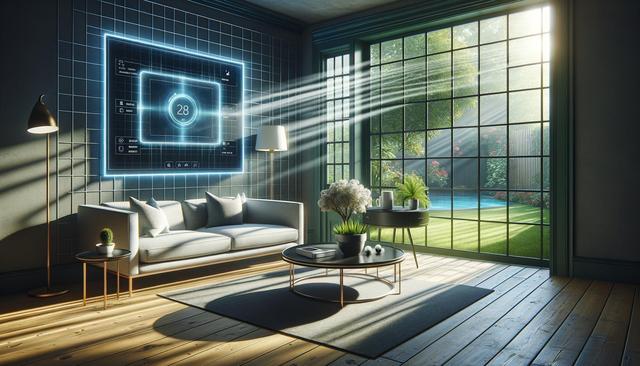
A Practical Guide to Home Security Systems
Understanding the Basics of Home Security Systems
Home security systems are designed to protect your property from intrusions, theft, and other dangers. They typically consist of a combination of hardware and software components, including motion detectors, door and window sensors, surveillance cameras, and control panels. Most modern systems also offer remote access via mobile apps, allowing homeowners to monitor and control their security setup from anywhere. Understanding how these components work together is the first step to choosing a system that suits your needs.
There are two main types of systems: monitored and unmonitored. Monitored systems connect to a central monitoring service that alerts authorities in case of a breach, while unmonitored systems rely on alarms and alerts sent directly to the homeowner. Additionally, systems can be wired or wireless, with wireless systems offering more flexibility and easier installation.
Key features to consider when evaluating home security systems include:
- 24/7 professional monitoring
- Smart home integration
- Mobile app control and alerts
- Environmental sensors (smoke, carbon monoxide, flood)
- Video surveillance and cloud storage
By understanding these basics, you can begin to assess what level of protection is appropriate for your home and lifestyle.
Benefits of Installing a Home Security System
There are several compelling reasons to invest in a home security system. First and foremost, these systems act as a deterrent to potential intruders. Visible cameras and alarm signs can discourage break-ins before they happen. In the event of a breach, alarms and alerts can help reduce response time and minimize losses.
Security systems also contribute to greater peace of mind. Whether you’re home or away, knowing that your property is being monitored helps reduce stress. Many systems offer features like live video feeds and instant alerts, so you’re always in the loop.
Some insurance providers offer discounts to homeowners who install security systems, recognizing the reduced risk of property loss or damage. Additionally, smart home integration allows security systems to work seamlessly with lighting, thermostats, and locks, offering enhanced control and energy efficiency.
Benefits homeowners can expect include:
- Protection against burglaries and property damage
- Real-time monitoring and alerts
- Insurance premium reductions
- Remote access and control of home systems
- Enhanced safety for family members
These advantages make home security systems a worthwhile consideration for a wide range of households.
Choosing the Right System for Your Needs
Selecting the right home security system requires careful consideration of your property size, layout, and personal needs. Start by assessing the vulnerabilities of your home. Large properties may require more cameras and sensors, while smaller homes can often be secured with a basic setup.
Next, think about your lifestyle. If you travel frequently or spend long hours away from home, a system with remote monitoring and alerts might be essential. On the other hand, if you’re often home, a simpler system with basic intrusion detection may suffice.
Budget is another important factor. While many systems are available at a range of price points, it’s important to balance cost with the level of protection provided. Some providers offer modular systems that can be expanded over time, allowing you to start with core components and add features as needed.
When comparing systems, look for:
- Customizability and scalability
- Ease of installation and user interface
- Customer service and support availability
- Compatibility with existing smart home devices
- Reputation and customer reviews
By considering these elements, you can find a solution that offers both practical protection and long-term value.
Installation and Maintenance Considerations
Proper installation is crucial for a home security system to function effectively. Many wireless systems are designed for DIY installation, with step-by-step instructions and user-friendly interfaces. However, more complex or wired systems may require professional setup to ensure optimal performance.
When installing components, it’s important to place sensors and cameras strategically. Entry points like doors and windows should be prioritized, as well as less-visible areas like back entrances or garages. Ensure that cameras have a clear line of sight and are protected from weather if placed outdoors.
Ongoing maintenance is also essential. Regular testing of alarms, replacing batteries, and checking camera feeds can prevent malfunctions and ensure your system remains reliable. Some systems include self-diagnostic features or maintenance reminders to aid in this process.
Maintenance tips include:
- Testing sensors and alarms monthly
- Checking and updating software regularly
- Cleaning camera lenses and repositioning if necessary
- Replacing batteries in sensors and control panels on schedule
Well-maintained systems are more likely to perform reliably and provide the protection they are designed for.
Integrating Home Security with Smart Home Technology
Modern home security systems often go hand-in-hand with smart home technology. Devices like smart locks, doorbell cameras, and automated lighting can enhance both convenience and safety. Integration allows you to control multiple systems from a single platform, streamlining your home management.
For example, you can program lights to turn on when motion is detected or set smart locks to automatically secure your doors when you leave. Voice assistants can be used to arm or disarm the system, and mobile apps allow for real-time monitoring from anywhere in the world.
Benefits of integration include:
- Improved user experience through unified control
- Increased energy efficiency with automated lighting and climate control
- Enhanced security through synchronized device actions
- Greater flexibility and customization options
Choosing devices that are compatible with your home security system ensures seamless interaction and maximizes functionality. As home automation continues to evolve, integrated systems will likely become the standard for residential security solutions.
Conclusion: Securing Your Home with Confidence
Home security systems offer a practical and effective way to protect your home, belongings, and loved ones. By understanding the various components, benefits, and considerations involved, homeowners can make informed decisions tailored to their unique needs. Whether you’re seeking basic intrusion detection or a fully integrated smart home setup, there are reliable options available to suit different lifestyles and budgets. Investing in a system not only enhances safety but also brings peace of mind, making it a valuable addition to any home.


